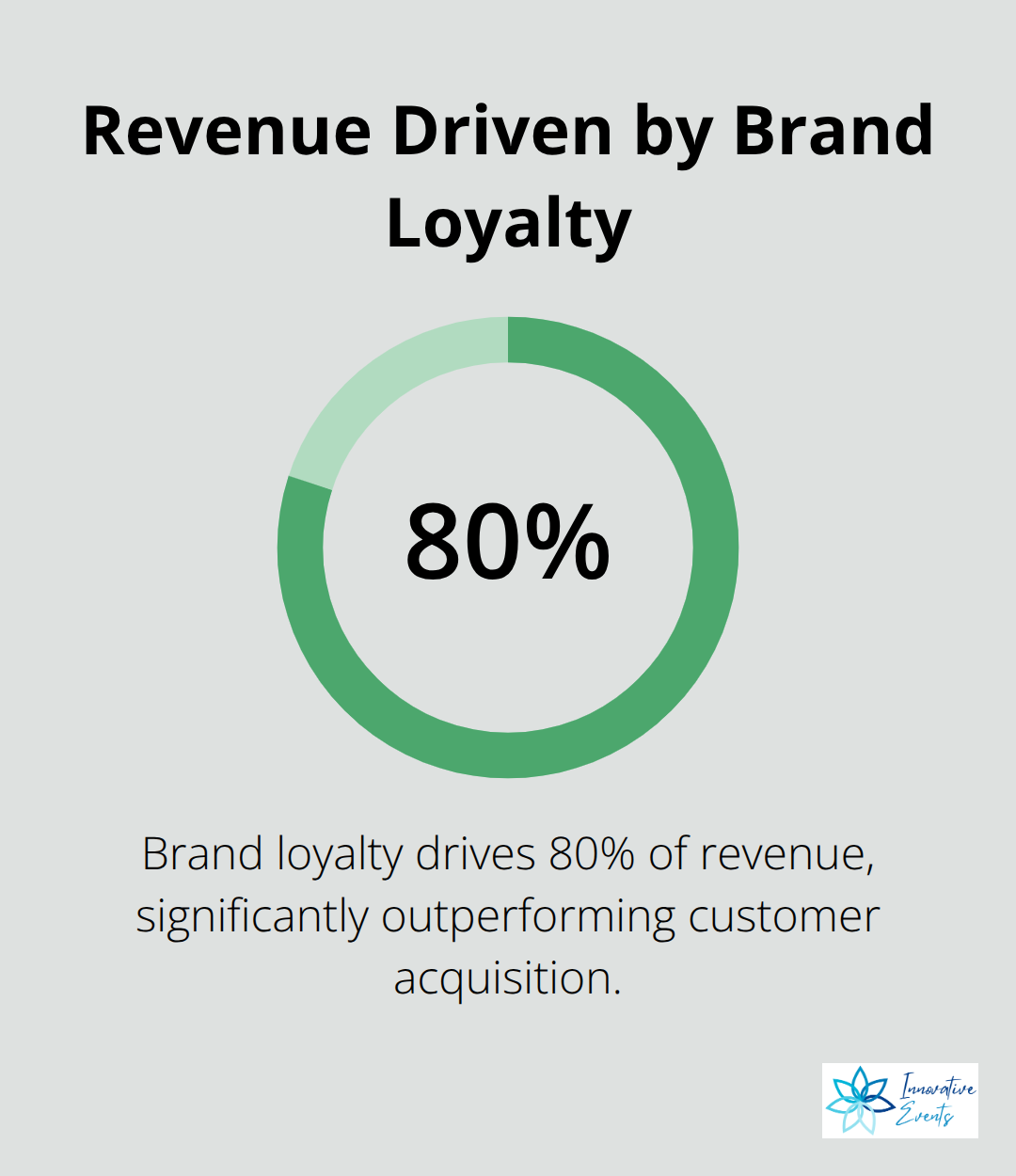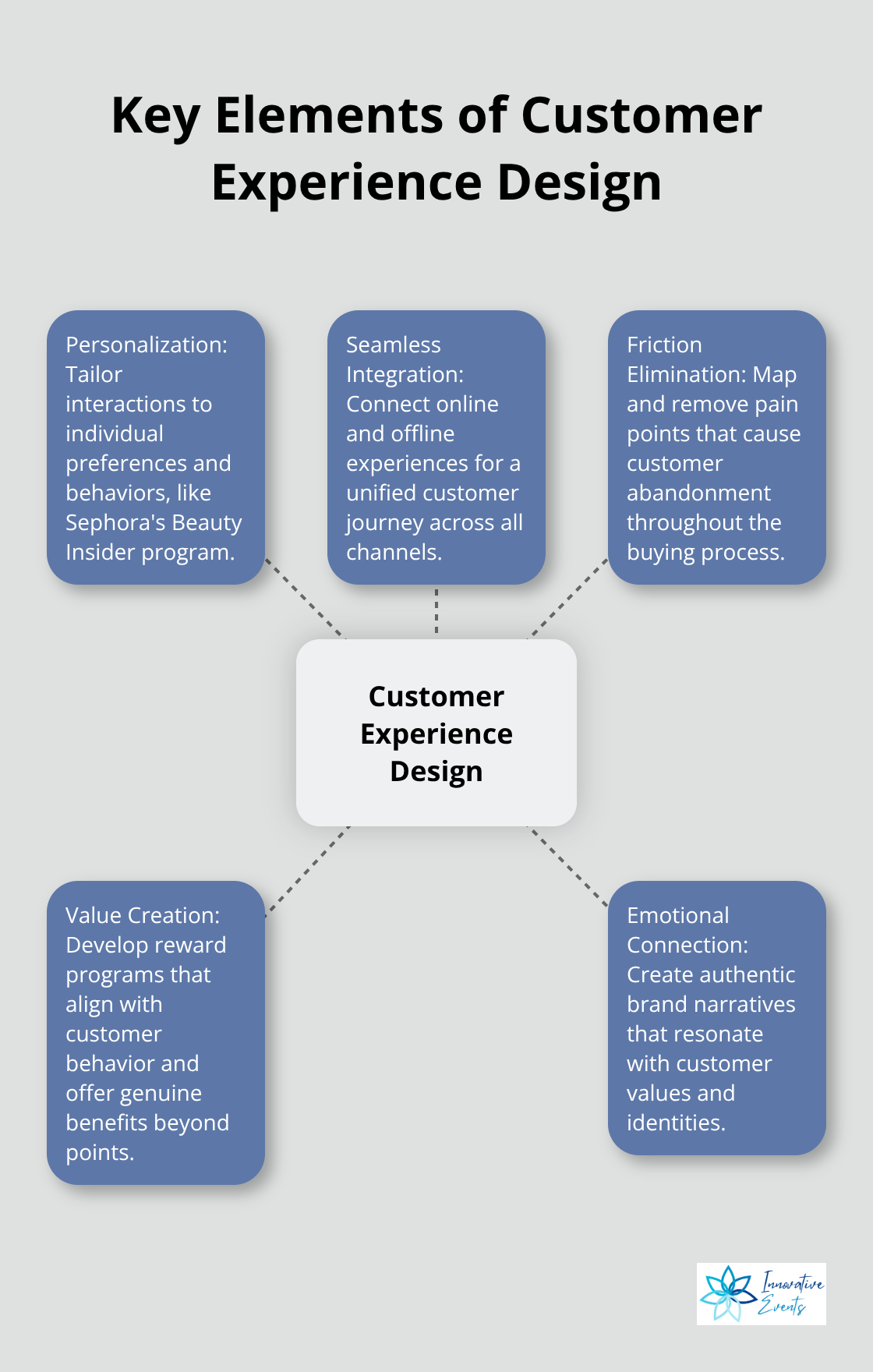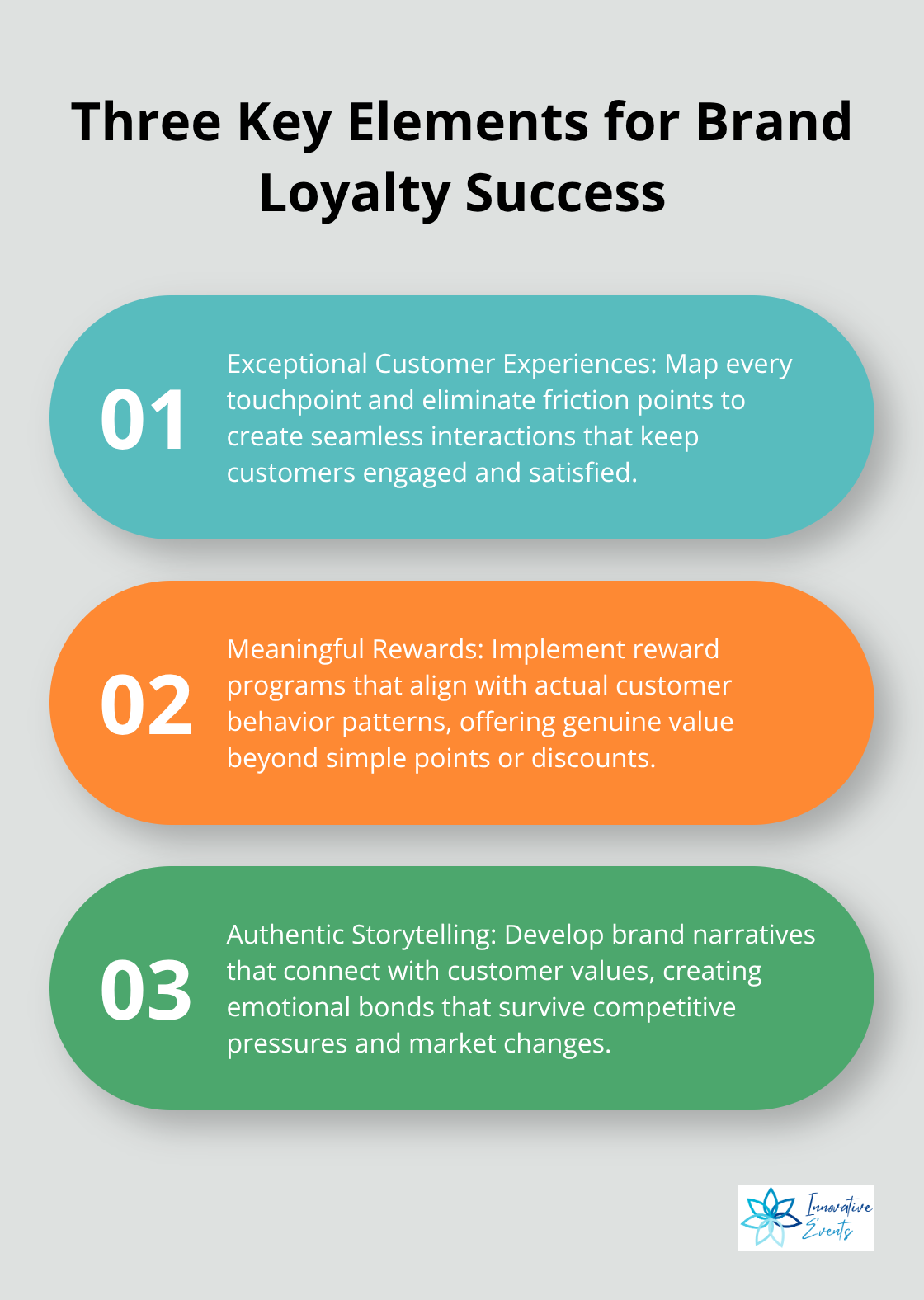Brand loyalty drives 80% more revenue than customer acquisition, yet most companies struggle to build lasting connections with their audience.
At Innovative Events, we’ve seen firsthand how the right brand loyalty strategy transforms one-time buyers into lifelong advocates. The most successful brands don’t just sell products-they create experiences that customers can’t find anywhere else.
Why Brand Loyalty Matters More Than Customer Acquisition
Brand loyalty represents the emotional and behavioral commitment customers develop toward your brand, which drives them to choose you repeatedly over competitors. This connection extends far beyond simple repeat purchases. Research shows that loyalty program members generate 12% to 18% more annual revenue growth compared to one-time buyers. The numbers tell a clear story: companies retain existing customers at significantly lower costs than what they spend to acquire new ones, while loyal customers consistently spend more throughout their relationship.

The Revenue Power of Customer Retention
Starbucks proves this concept with remarkable results. Their Rewards program includes 34.3 million U.S. users who generate nearly 41% of company sales, with members who spend substantially more than non-members. Amazon Prime members spend an average of $1,500 annually compared to $625 for non-members (according to Consumer Intelligence Research Partners). These figures reveal a fundamental truth: loyal customers return more frequently and increase their spending over time.
Essential Metrics That Drive Success
Three key metrics reveal your loyalty performance with precision. Net Promoter Score measures customer willingness to recommend your brand, with scores above 50 that indicate strong loyalty. Customer Lifetime Value calculates total revenue from each customer relationship, while repeat purchase rate shows the percentage of customers who make additional purchases within specific timeframes. Companies that actively measure and respond to these metrics achieve 25% higher customer retention rates than those that operate without clear data.
The Strategic Foundation for Growth
Smart businesses recognize that loyalty programs create competitive advantages that acquisition campaigns cannot match. Successful loyalty strategies focus on emotional connections rather than transactional relationships, which transform casual buyers into brand advocates. These advocates generate word-of-mouth marketing that costs nothing but delivers exponential returns. The foundation you build through loyalty measurement and customer retention directly impacts how you design experiences that keep customers coming back for more.
What Makes Customers Stay Forever
Customer experience design determines whether buyers become advocates or disappear after their first purchase. Companies that prioritize experience generate higher profits than competitors, with CX leaders needing to build advocates and allies as a critical success factor. The difference lies in systematic approaches rather than random acts of service excellence. Zappos transformed shoe retail when it made returns effortless, while Amazon built loyalty through one-click purchases and predictive recommendations based on purchase history.
Experience Design That Converts
Smart companies map every customer touchpoint and eliminate friction points that cause abandonment. Sephora’s Beauty Insider program drives significant company sales through personalized product recommendations and exclusive access to new launches. Their success comes from the integration of online and offline experiences, which allows customers to book appointments through mobile apps and access their purchase history across all channels. McDonald’s MyMcDonald’s Rewards program demonstrates how simple personalization drives engagement, with 25 million active U.S. members who visit more frequently than non-members. The key lies in how companies make every interaction feel tailored without creating complexity.

Rewards That Drive Real Behavior Change
Effective reward programs go beyond points and discounts to create genuine value for customers. Starbucks members spend significantly more than non-members because rewards align with actual customer behavior patterns. The program rewards frequency rather than just purchase amounts, which encourages daily visits through free refills and mobile ordering benefits. Lululemon gained 9 million sign-ups in five months when they offered early access to new products and exclusive fitness content (this proves that experiences often outperform discounts). MoxieLash members spend 1.5 times more than non-members because their program rewards social media sharing, which turns customers into content creators.
Storytelling That Creates Emotional Investment
Authentic brand narratives connect with customer values rather than product features. Nike’s storytelling resonates with personal achievement aspirations, which creates emotional bonds that survive competitive pricing pressures. Patagonia builds loyalty through environmental activism that matches customer beliefs and generates word-of-mouth marketing that acquisition campaigns cannot replicate. The North Face’s XPLR Pass rewards outdoor education alongside purchases (this reinforces brand values while providing practical customer benefits). Companies that align their stories with customer identities create relationships that transcend transactional interactions.
These proven strategies work best when companies combine them with live experiences that bring customers together. Events create opportunities for face-to-face connections that digital interactions cannot match, which transforms individual customer relationships into brand communities.
Why Events Build Loyalty Better Than Digital Marketing
Live events create emotional connections that digital campaigns cannot match. These experiences transform casual customers into passionate advocates who champion your brand. Harley-Davidson demonstrates this power through their riding clubs, which generate community engagement that extends far beyond motorcycle purchases. Members participate in over 1,000 group rides monthly through programs like Rapha Cycling Club. These shared experiences strengthen brand relationships in ways that online interactions simply cannot replicate.
Events That Generate Measurable Loyalty Results
Smart companies design events that reward existing customers while they attract new prospects through exclusive access and premium experiences. SKIMS uses product drops as a scarcity marketing strategy that turns shopping into exclusive opportunities, driving hype and customer engagement. The North Face’s XPLR Pass generated a 54% increase in campaign page traffic when they combined outdoor education events with their loyalty program rewards.
Corporate conferences work best when they focus on customer education rather than product promotion. This approach positions your company as a trusted advisor rather than just another vendor. Product launch events should include hands-on demonstrations and expert presentations that help customers understand practical applications and benefits (this creates immediate value beyond the product itself).
Community Creation Through Strategic Event Design
Successful event marketing transforms individual customer relationships into interconnected brand communities where members support each other and advocate for your company. Lululemon’s fitness classes and wellness workshops create environments where customers share experiences and build friendships around shared values. These community connections generate word-of-mouth marketing that acquisition campaigns cannot replicate.
Companies that host regular networking events and educational seminars position themselves at the center of customer professional development. This creates dependency relationships that competitors struggle to break (while customers gain genuine value from the expertise and connections). Adobe built its online community around creative professionals who attend workshops and networking events, which generates loyalty rates that exceed traditional marketing approaches.
Face-to-Face Interactions That Create Lasting Memories
Live events produce memories and relationships that customers associate directly with your brand. These face-to-face interactions create emotional bonds that survive competitive pricing pressures and market changes. Event attendees remember conversations, demonstrations, and shared experiences long after digital ads fade from memory, while social media engagement requires constant content creation to maintain visibility.
Final Thoughts
Brand loyalty strategy success requires companies to combine exceptional customer experiences with meaningful rewards and authentic storytelling. Companies that master these three elements generate 12% to 18% more annual revenue growth while they reduce acquisition costs significantly. You must map every customer touchpoint and remove friction points that cause abandonment, then implement reward programs that align with actual customer behavior patterns rather than generic point systems.
Live events amplify these efforts when they create face-to-face connections that digital marketing cannot replicate. Corporate conferences, product launches, and community gatherings transform individual customer relationships into interconnected brand communities where members advocate for your company. These experiences produce memories and relationships that customers associate directly with your brand (while digital ads fade from memory quickly).

At Innovative Events, we help companies design immersive brand experiences that strengthen customer relationships through strategic event management. Loyal customers spend more frequently, recommend your brand to others, and resist competitive offers. Companies that invest in customer loyalty today create sustainable competitive advantages that protect against market volatility while they generate predictable revenue streams for years ahead.

